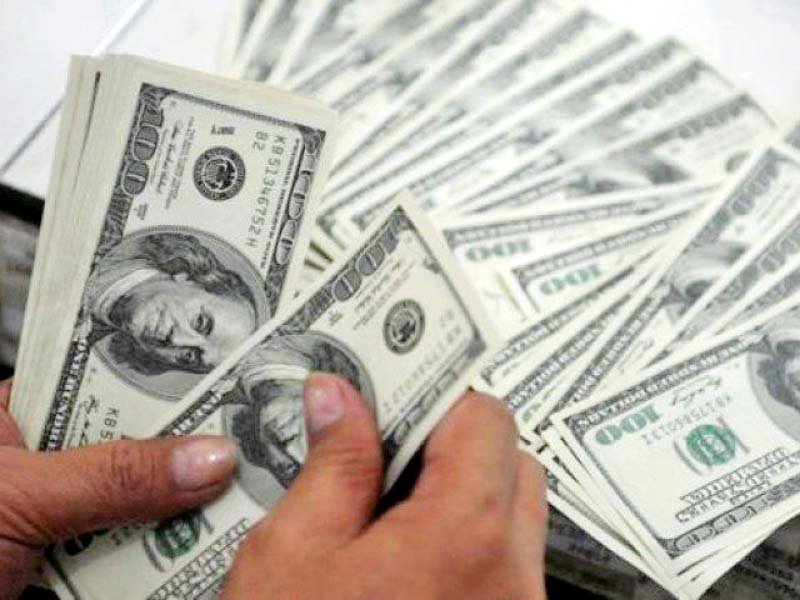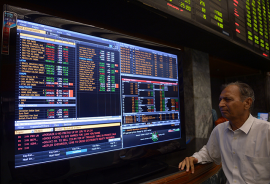
Largely pulled by Chinese commercial loans and issuance of sovereign bonds, the disbursements of foreign loans touched $9.2 billion from July through April of this fiscal year, said officials in the finance ministry. In April alone, Pakistan received $1.6 billion as loans and three-fourths of it was contributed by two Chinese commercial banks, they added.
China’s share was $3.7 billion or 40.3%, indicating Pakistan’s heavy reliance on its northern neighbour. From July through April, China gave $1.5 billion as project financing and $2.2 billion in commercial loans. In April, Bank of China disbursed $200 million and the China Development Bank released $1 billion. Pakistan has already contracted a loan of $1 billion from the Industrial and Commercial Bank of China.
With the fresh borrowing of $9.2 billion, total foreign loans the PML-N government so far obtained during its third stint (July 2013 to April 2018) have now increased to a record $44.2 billion.
Most of these loans have been obtained to help boost foreign currency reserves, finance a bulging current account deficit and for budgetary support. A major chunk of $44.2 billion has been spent on non-productive areas of the economy, which has created issues for the government in managing the country’s external debt.
Pakistan’s external debt and liabilities have soared to a record $91.8 billion as of March-end, an increase of over 50% or nearly $31 billion in past four years and nine months, according to the State Bank of Pakistan (SBP). Out of total external debt and liabilities, the government’s public debt obligations including that of foreign exchange liabilities were $76.1 billion as of end March.
In the past four years and nine months, public debt-related obligations increased by 42.5% or $22.7 billion, showed the central bank data. In June 2013, the public external debt including foreign exchange liabilities was only $53.4 billion.
The public debt-to-gross domestic product (GDP) ratio has been estimated to peak to 70.1% by the end of fiscal year 2017-18 in June. This ratio is far higher than the sustainable levels for a country like Pakistan. High debt levels are consuming over 30% of the federal government budget on account of debt servicing cost.
For the outgoing fiscal year 2017-18, the government had initially budgeted $8 billion worth of foreign economic assistance. Due to the higher-than-estimated current account deficit, the finance ministry has now revised its estimates to nearly $11 billion.
The SBP also reported that the current account deficit widened to a 10-month record of $14.03 billion during July-April. It was higher by 50% or $4.7 billion over the previous fiscal year.
Despite obtaining heavy loans, the SBP and finance ministry have failed to retain gross official foreign currency reserves, which stood at $10.8 billion. Since the start of the fiscal year, the central bank has lost one third or $5.4 billion of its total reserves.
Pakistan borrows another $500m from Chinese bank
The International Monetary Fund (IMF) has predicted that in case of low disbursements, Pakistan’s foreign currency reserves may slip to $9.4 billion by June this year.
To service maturing debt, Pakistan to borrow Rs22 trillion in 2018-19
Out of $9.2 billion disbursements, about 70% or $6.4 billion were taken for non-project financing purposes. This included $2.5 billion sovereign bonds, $2.9 billion foreign commercial loans and $987 million financing by Islamic Development Bank for oil imports.
The project financing has been consistently declining in terms of its share in total foreign loans. Against Pakistan’s estimates of receiving around $1 billion from the World Bank, the Washington-based lender disbursed only $426.3 million in ten months. Pakistan had also hoped of receiving $1.1 billion from the Asian Development Bank (ADB) in fiscal year 2017-18, but actual disbursements from July through April remained at $646.2 million. The ADB disbursed $34.6 million in April for Peshawar metro bus project.
Pakistan’s external debt grows at fastest pace in four years
The only major project financing was coming from China that disbursed $1.5 billion in ten months, better than Pakistan’s estimates. Last month, China released $111 million for Lahore Orange Metro train project.
Bilateral economic assistance remained an important component. But now, almost the entire bilateral assistance has shifted towards China. From July through April, the bilateral assistance stood at $1.6 billion and 93.5% came from China. Only Japan gave $59.4 million followed by $22.5 million by Saudi Arabia.
Published in The Express Tribune, May 19th, 2018.
Like Business on Facebook, follow @TribuneBiz on Twitter to stay informed and join in the conversation.


1725030039-0/Untitled-design-(2)1725030039-0-165x106.webp)
1725366721-0/kyle-(1)1725366721-0-165x106.webp)
1731410017-0/BeFunky-collage-(45)1731410017-0-165x106.webp)


1732084432-0/Untitled-design-(63)1732084432-0-270x192.webp)









COMMENTS
Comments are moderated and generally will be posted if they are on-topic and not abusive.
For more information, please see our Comments FAQ